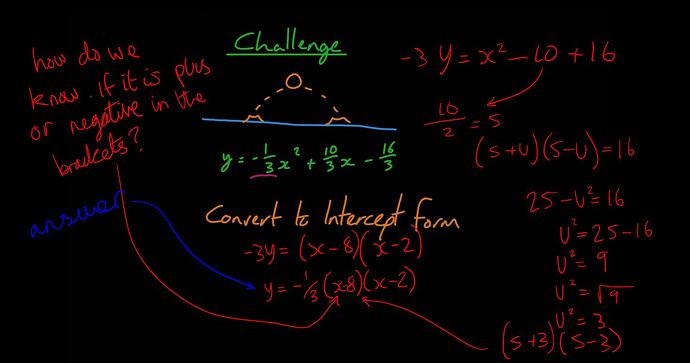Here’s my answer for the Factoring Quadratics challenge:
Q1. Given y = (-1/3)x² + (10/3)x - (16/3), convert to vertex form
A1. y = (-1/3)(x - 2)(x - 8)
A1a. y = (-1/3)x² + (10/3)x - (16/3)
A1b -3y = x² - 10x + 16
Divide b by two to get 5, insert into equation below and solve:
A1c.(5 + u)(5 - u) = 16
A1d. 25 - u² = 16
A1fe -u² = -9
A1f. u² = 9
A1g. u = 3
Insert result of 3 back into original and solve:
A1h. (5 + 3)(5 - 3) = 16
A1i. 8 * 2 = 16
This means our two roots are (2, 0) and (8, 0). We can now insert these values into our intercept form equation for p and q as well as our already known value for a. This gives us:
y = (-1/3)(x - 2)(x - 8)


